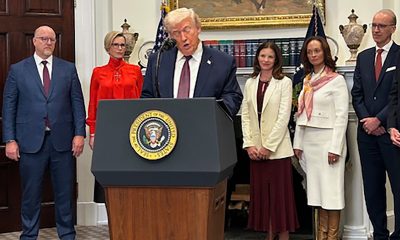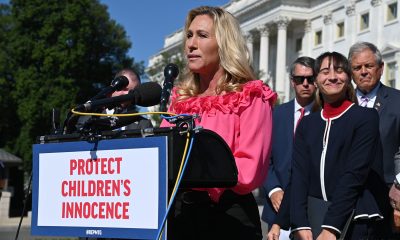National
High price for Hep C drug sparks controversy
Treatment can cure disease common in people with HIV
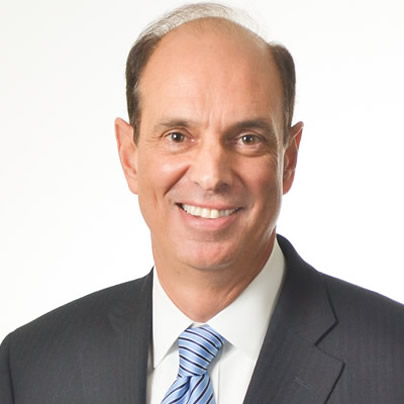
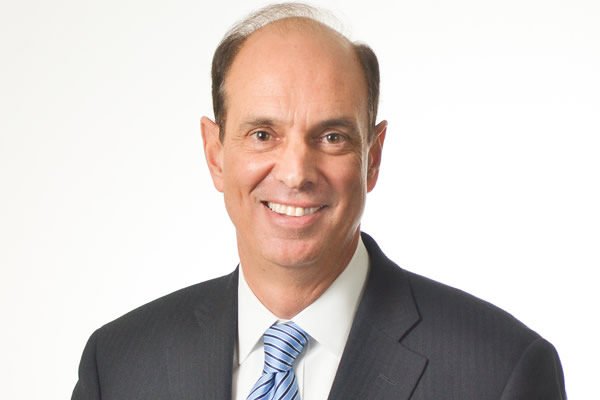
Carl Schmid, deputy director of the AIDS Institute, said Sovaldi is expensive, ‘but this is remarkable progress and the cure rate is extremely high.’ (Photo courtesy of Schmid)
The pharmaceutical company Gilead Sciences received praise earlier this month for bringing to market a newly approved drug capable of curing the potentially fatal liver disease Hepatitis C without the serious and debilitating side effects caused by the existing drug used to treat the disease.
Experts say 20 percent of people with HIV are co-infected with Hepatitis C, which over a period of years can lead to death through liver cancer and liver failure. Physicians treating people with HIV, including Whitman-Walker Health’s medical director, Dr. Richard Elion, have called Gilead’s new drug a major breakthrough.
But at least two organizations that advocate for people with HIV and Hepatitis C have denounced Gilead for setting the wholesale price for its new drug Sovaldi at a level they consider exorbitant and which they say could lead to further escalating prices for AIDS drugs.
The AIDS Healthcare Foundation, the nation’s largest private organization providing medical services for people with HIV/AIDS, and the Fair Pricing Coalition, which advocates for affordable prices for prescription drugs for people with serious illnesses, called Gilead’s decision to set a wholesale acquisition cost of $84,000 for a 12-week treatment regimen of Sovaldi unprecedented.
“There can be no better example of the unbridled greed of the pharmaceutical industry than Gilead’s latest move: pricing its new hepatitis drug at $84,000 per 28-tablet bottle or $1,000 per pill,” said Michael Weinstein, president of AHF.
Lynda Dee, co-chair of Fair Pricing Coalition, called Sovaldi a “very safe and highly effective drug” but noted that it must be used in combination with other drugs to treat different Genotypes, or strains, of Hepatitis C.
She said that although the other drugs – pegylated interferon and ribavirin – are not as expensive as Sovaldi, the price tag for combination therapy with Sovaldi comes to $93,000 and $168,000 for various treatment regimens for a single person living with Hepatitis C.
“Gilead has set the bar dangerously high as other companies determine prices for similar Hepatitis C drugs as they enter the market,” Dee said.
In a statement released at the time the U.S. Food and Drug Administration approved Sovaldi for patient use on Dec. 6, Gilead said it had put in place a patient assistance program to ensure that people with Hepatitis C have access to Sovaldi regardless of their ability to pay for it.
The statement said the program provides assistance to “patients who are uninsured, underinsured or who need financial assistance to pay for the medicine.” The program, called Support Path, will provide Sovaldi “at no charge for eligible patients with no other insurance options,” according to the statement.
While praising Gilead for offering such a program, which is common within the pharmaceutical industry, critics say the high price for Sovaldi would likely prompt other companies to put in place similarly high pricing policies for other promising drugs about to be released for the treatment of both Hepatitis C and HIV/AIDS.
Some Wall Street analysts suggested Gilead’s price for Sovaldi may be justified when taking into consideration the amount it spent to bring such a beneficial drug to market. Bloomberg business news service reported that Gilead, which didn’t invent Sovaldi, paid $11 billion in 2011 to buy Pharmasset, Inc., the company that developed Sovaldi and other Hepatitis C drugs expected to be approved soon.
Bloomberg cited pharmaceutical industry observers who said the Hepatitis C drugs Gilead obtained through this purchase could pull in as much as $20 billion by 2020.
Clinical trials with patients monitored by the Food and Drug Administration demonstrated that Sovaldi had a cure rate of more than 90 percent for patients with the Genotype 2 strain of Hepatitis C following a 12-week regimen with the drug ribavirin. Patients with Genotype 3, another strain of Hepatitis C, had a similarly successful cure rate following a 24-week regimen of Sovaldi and Ribavirin, the trials showed.
For patients with Genotype 1 or 4 of the Hepatitis C infection, the Sovaldi treatment needed to be combined with pegylated alfa interferon, the drug of choice for Hepatitis C before the development of Sovaldi and other new drugs nearing completion of clinical trials, statements by Gilead and the FDA said. Interferon causes serious and debilitating side effects for most patients, forcing some to stop using it before the Hepatitis C virus can be eliminated, according to medical experts.
The good news, according to those monitoring Hepatitis C treatment developments, is that Gilead and other pharmaceutical companies are close to releasing other new drugs capable of effectively curing patients with the Genotype 1 and Genotype 4 strains without the need for Interferon.
“I believe that Sovaldi will have a major impact on public health by significantly increasing the number of Americans who are cured of Hepatitis C,” said Dr. Ira Jacobson, chief of the Division of Gastroenterology at Weill Cornell Medical College in New York City, who served as a principal investigator in the clinical trials of Sovaldi.
Carl Schmid, deputy director of the AIDS Institute, which advocates for people with HIV, said the ability of Sovaldi to actually cure patients with Hepatitis C makes it different from HIV drugs on the market, which keep most patients healthy but cannot cure HIV/AIDS.
“Yes, it’s expensive,” he said of Sovaldi. “But this is remarkable progress and the cure rate is extremely high.”
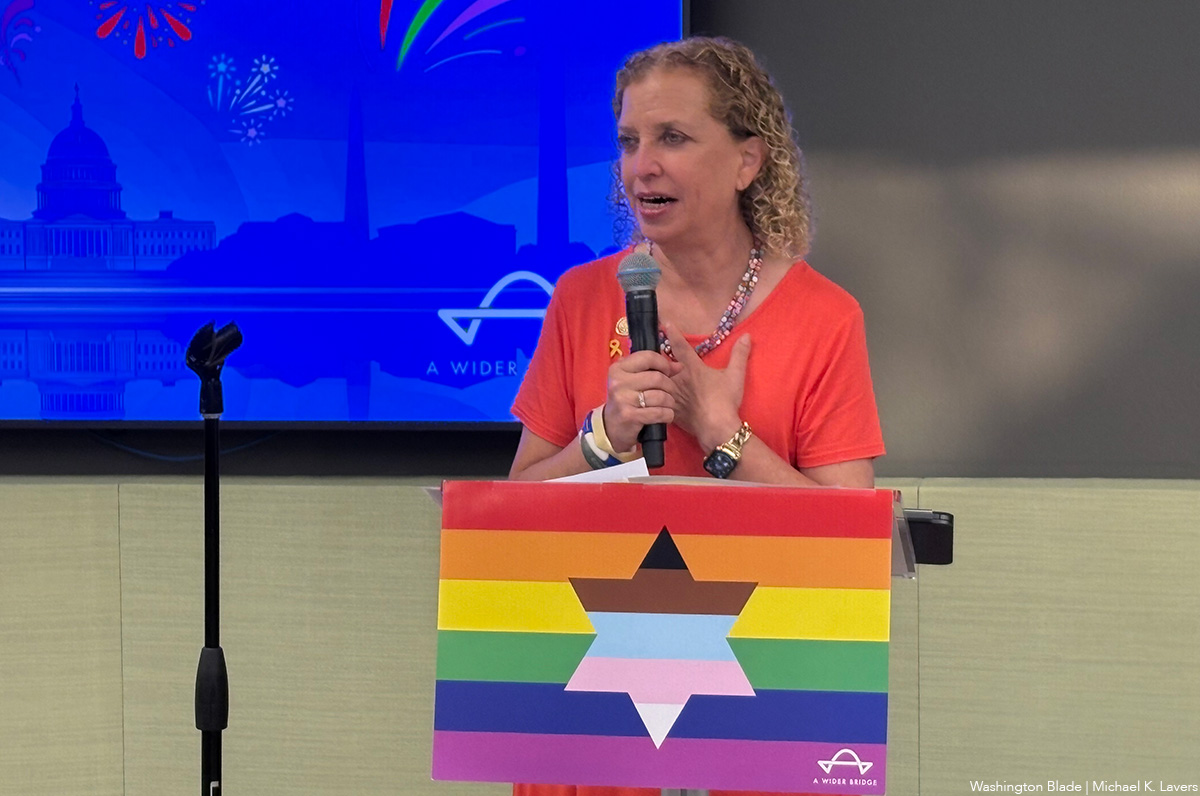
A Wider Bridge on Friday announced it will shut down at the end of the month.
The group that “mobilizes the LGBTQ community to fight antisemitism and support Israel and its LGBTQ community” in a letter to supporters said financial challenges prompted the decision.
“After 15 years of building bridges between LGBTQ communities in North America and Israel, A Wider Bridge has made the difficult decision to wind down operations as of Dec. 31, 2025,” it reads.
“This decision comes after challenging financial realities despite our best efforts to secure sustainable funding. We deeply appreciate our supporters and partners who made this work possible.”
Arthur Slepian founded A Wider Bridge in 2010.
The organization in 2016 organized a reception at the National LGBTQ Task Force’s Creating Change Conference in Chicago that was to have featured to Israeli activists. More than 200 people who protested against A Wider Bridge forced the event’s cancellation.
A Wider Bridge in 2024 urged the Capital Pride Alliance and other Pride organizers to ensure Jewish people can safely participate in their events in response to an increase in antisemitic attacks after Hamas militants attacked Israel on Oct. 7, 2023.
The Jewish Telegraphic Agency reported authorities in Vermont late last year charged Ethan Felson, who was A Wider Bridge’s then-executive director, with lewd and lascivious conduct after alleged sexual misconduct against a museum employee. Rabbi Denise Eger succeeded Felson as A Wider Bridge’s interim executive director.
A Wider Bridge in June honored U.S. Rep. Debbie Wasserman Schultz (D-Fla.) at its Pride event that took place at the Capital Jewish Museum in D.C. The event took place 15 days after a gunman killed two Israeli Embassy employees — Yaron Lischinsky and Sarah Milgrim — as they were leaving an event at the museum.
“Though we are winding down, this is not a time to back down. We recognize the deep importance of our mission and work amid attacks on Jewish people and LGBTQ people – and LGBTQ Jews at the intersection,” said A Wider Bridge in its letter. “Our board members remain committed to showing up in their individual capacities to represent queer Jews across diverse spaces — and we know our partners and supporters will continue to do the same.”
Editor’s note: Washington Blade International News Editor Michael K. Lavers traveled to Israel and Palestine with A Wider Bridge in 2016.
The White House
‘Trump Rx’ plan includes sharp cuts to HIV drug prices
President made announcement on Friday

President Donald Trump met with leaders from some of the world’s largest pharmaceutical companies at the White House on Friday to announce his new “Trump Rx” plan and outline efforts to reduce medication costs for Americans.
During the roughly 47-minute meeting in the Roosevelt Room, Trump detailed his administration’s efforts to cut prescription drug prices and make medications more affordable for U.S. patients.
“Starting next year, American drug prices will come down fast, furious, and will soon be among the lowest in the developed world,” Trump said during the meeting. “For decades, Americans have been forced to pay the highest prices in the world for prescription drugs by far … We will get the lowest price of anyone in the world.”
Trump signed an executive order in May directing his administration “to do everything in its power to slash prescription drug prices for Americans while getting other countries to pay more.”
“This represents the greatest victory for patient affordability in the history of American health care, by far, and every single American will benefit,” he added.
Several pharmaceutical executives stood behind the president during the announcement, including Sanofi CEO Paul Hudson, Novartis CEO Vas Narasimhan, Genentech CEO Ashley Magargee, Boehringer Ingelheim (USA) CEO Jean-Michel Boers, Gilead Sciences CEO Dan O’Day, Bristol Myers Squibb General Counsel Cari Gallman, GSK CEO Emma Walmsley, Merck CEO Robert Davis, and Amgen Executive Vice President Peter Griffith.
Also in attendance were Health and Human Services Secretary Robert F. Kennedy Jr., Commerce Secretary Howard Lutnick, Centers for Medicare and Medicaid Services Administrator Mehmet Oz, and Food and Drug Administration Commissioner Marty Makary.
Under the Trump Rx plan, the administration outlined a series of proposed drug price changes across multiple companies and therapeutic areas. Among them were reductions for Amgen’s cholesterol-lowering drug repatha from $573 to $239; Bristol Myers Squibb’s HIV medication reyataz from $1,449 to $217; Boehringer Ingelheim’s type 2 diabetes medication jentadueto from $525 to $55; Genentech’s flu medication xofluza from $168 to $50; and Gilead Sciences’ hepatitis C medication epclusa from $24,920 to $2,425.
Additional reductions included several GSK inhalers — such as the asthma inhaler advair diskus 500/50, from $265 to $89 — Merck’s diabetes medication januvia from $330 to $100, Novartis’ multiple sclerosis medication mayzent from $9,987 to $1,137, and Sanofi’s blood thinner plavix from $756 to $16. Sanofi insulin products would also be capped at $35 per month’s supply.
These prices, however, would only be available to patients who purchase medications directly through TrumpRx. According to the program’s website, TrumpRx “connects patients directly with the best prices, increasing transparency, and cutting out costly third-party markups.”
Kennedy spoke after Trump, thanking the president for efforts to lower pharmaceutical costs in the U.S., where evidence has shown that drug prices — including both brand-name and generic medications — are nearly 2.78 times higher than prices in comparable countries. According to the Pharmaceutical Research and Manufacturers of America, roughly half of every dollar spent on brand-name drugs goes to entities that play no role in their research, development, or manufacturing.
“This is affordability in action,” Kennedy said. “We are reversing that trend and making sure that Americans can afford to get the life-saving solutions.”
Gilead CEO Dan O’Day also spoke about how the restructuring of drug costs under TrumpRx, combined with emerging technologies, could help reduce HIV transmission — a virus that, if untreated, can progress to AIDS. The LGBTQ community remains disproportionately affected by HIV.
“Thank you, Mr. President — you and the administration,” O’Day said. “I think this objective of achieving the commitment to affordability and future innovation is extraordinary … We just recently launched a new medicine that’s only given twice a year to prevent HIV, and we’re working with Secretary Kennedy and his entire team, as well as the State Department, as a part of your strategy to support ending the epidemic during your term.
“I’ve never been more optimistic about the innovation that exists across these companies and the impact this could have on America’s health and economy,” he added.
Trump interjected, asking, “And that’s working well with HIV?”
“Yes,” O’Day replied.
“It’s a big event,” Trump said.
“It literally prevents HIV almost 100 percent given twice a year,” O’Day responded.
A similar anti-HIV medication is currently prescribed more than injectable form mentioned by O’Day. PrEP, is a medication regimen proven to significantly reduce HIV infection rates for people at high risk. Without insurance, brand-name Truvada can cost roughly $2,000 per month, while a generic version costs about $60 per month.
Even when medication prices are reduced, PrEP access carries additional costs, including clinic and laboratory fees, office visits, required HIV and sexually transmitted infection testing, adherence services and counseling, and outreach to potentially eligible patients and providers.
According to a 2022 study, the annual total cost per person for PrEP — including medication and required clinical and laboratory monitoring — is approximately $12,000 to $13,000 per year.
The TrumpRx federal platform website is now live at TrumpRx.gov, but the program is not slated to begin offering reduced drug prices until January.
The White House
EXCLUSIVE: Democracy Forward files FOIA lawsuit after HHS deadnames Rachel Levine
Trans former assistant health secretary’s name changed on official portrait

Democracy Forward, a national legal organization that works to advance democracy and social progress through litigation, policy and public education, and regulatory engagement, filed a lawsuit Friday in federal court seeking to compel the U.S. Department of Health and Human Services to release information related to the alteration of former Assistant Secretary for Health Adm. Rachel Levine’s official portrait caption.
The lawsuit comes in response to the slow pace of HHS’s handling of multiple Freedom of Information Act requests — requests that federal law requires agencies to respond to within 20 working days. While responses can take longer due to backlogs, high request volumes, or the need for extensive searches or consultations, Democracy Forward says HHS has failed to provide any substantive response.
Democracy Forward’s four unanswered FOIA requests, and the subsequent lawsuit against HHS, come days after someone in the Trump-Vance administration changed Levine’s official portrait in the Hubert H. Humphrey Building to display her deadname — the name she used before transitioning and has not used since 2011.
According to Democracy Forward, HHS “refused to release any records related to its morally wrong and offensive effort to alter former Assistant Secretary for Health Admiral Rachel Levine’s official portrait caption.” Levine was the highest-ranking openly transgender government official in U.S. history and served as assistant secretary for health and as an admiral in the U.S. Public Health Service Commissioned Corps from 2021 to 2025.
Democracy Forward President Skye Perryman spoke about the need to hold the Trump-Vance administration accountable for every official action, especially those that harm some of the most targeted Americans, including trans people.
“The question every American should be asking remains: what is the Trump-Vance administration hiding? For an administration that touts its anti-transgender animus and behavior so publicly, its stonewalling and silence when it comes to the people’s right to see public records about who was behind this decision is deafening,” Perryman said.
“The government’s obligation of transparency doesn’t disappear because the information sought relates to a trailblazing former federal official who is transgender. It’s not complicated — the public is entitled to know who is making decisions — especially decisions that seek to alter facts and reality, erase the identity of a person, and affect the nation’s commitment to civil rights and human dignity.”
“HHS’s refusal to respond to these lawful requests raises more serious concerns about transparency and accountability,” Perryman added. “The public has every right to demand answers — to know who is behind this hateful act — and we are going to court to get them.”
The lawsuit also raises questions about whether the alteration violated federal accuracy and privacy requirements governing Levine’s name, and whether the agency improperly classified the change as an “excepted activity” during a lapse in appropriations. By failing to make any determination or produce any records, Democracy Forward argues, HHS has violated its obligations under federal law.
The case, Democracy Forward Foundation v. U.S. Department of Health and Human Services, was filed in the U.S. District Court for the District of Columbia. The legal team includes Anisha Hindocha, Daniel McGrath, and Robin Thurston.
The Washington Blade reached out to HHS, but has not received any comment.
The lawsuit and four FOIA requests are below:
-

 Politics2 days ago
Politics2 days agoLGBTQ Democrats say they’re ready to fight to win in 2026
-

 District of Columbia2 days ago
District of Columbia2 days agoBrian Footer suspends campaign for Ward 1 D.C. Council seat
-

 Chile5 days ago
Chile5 days agoFar-right José Antonio Kast elected Chile’s next president
-

 Opinions3 days ago
Opinions3 days agoLighting candles in a time of exhaustion

